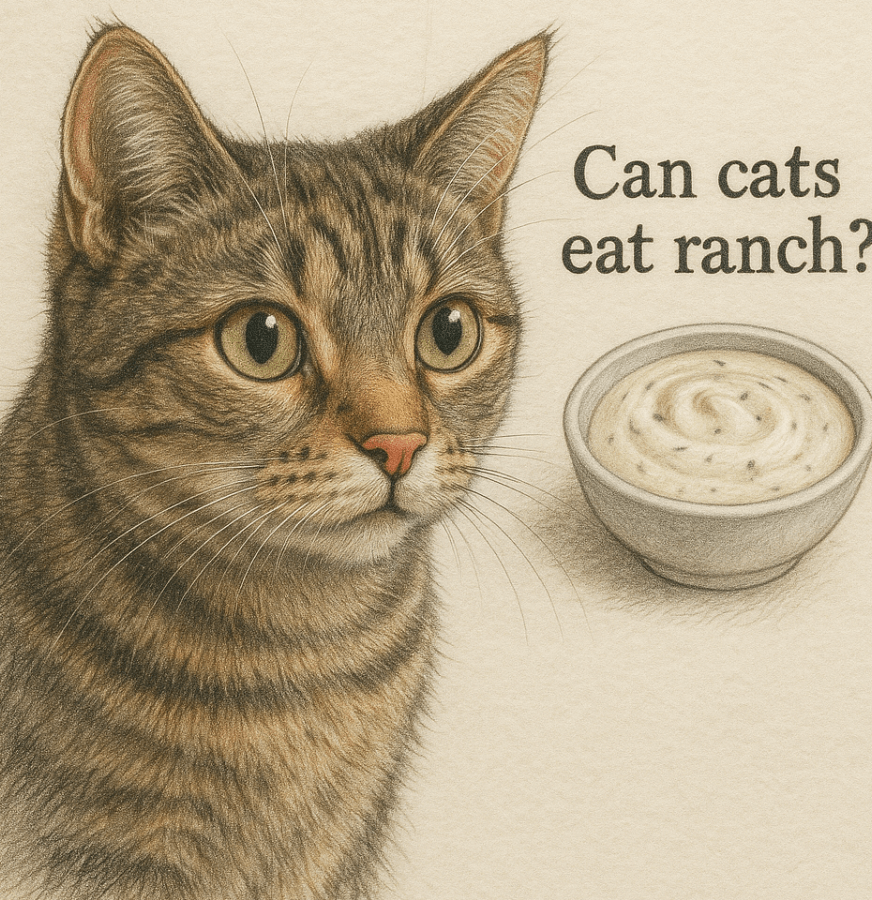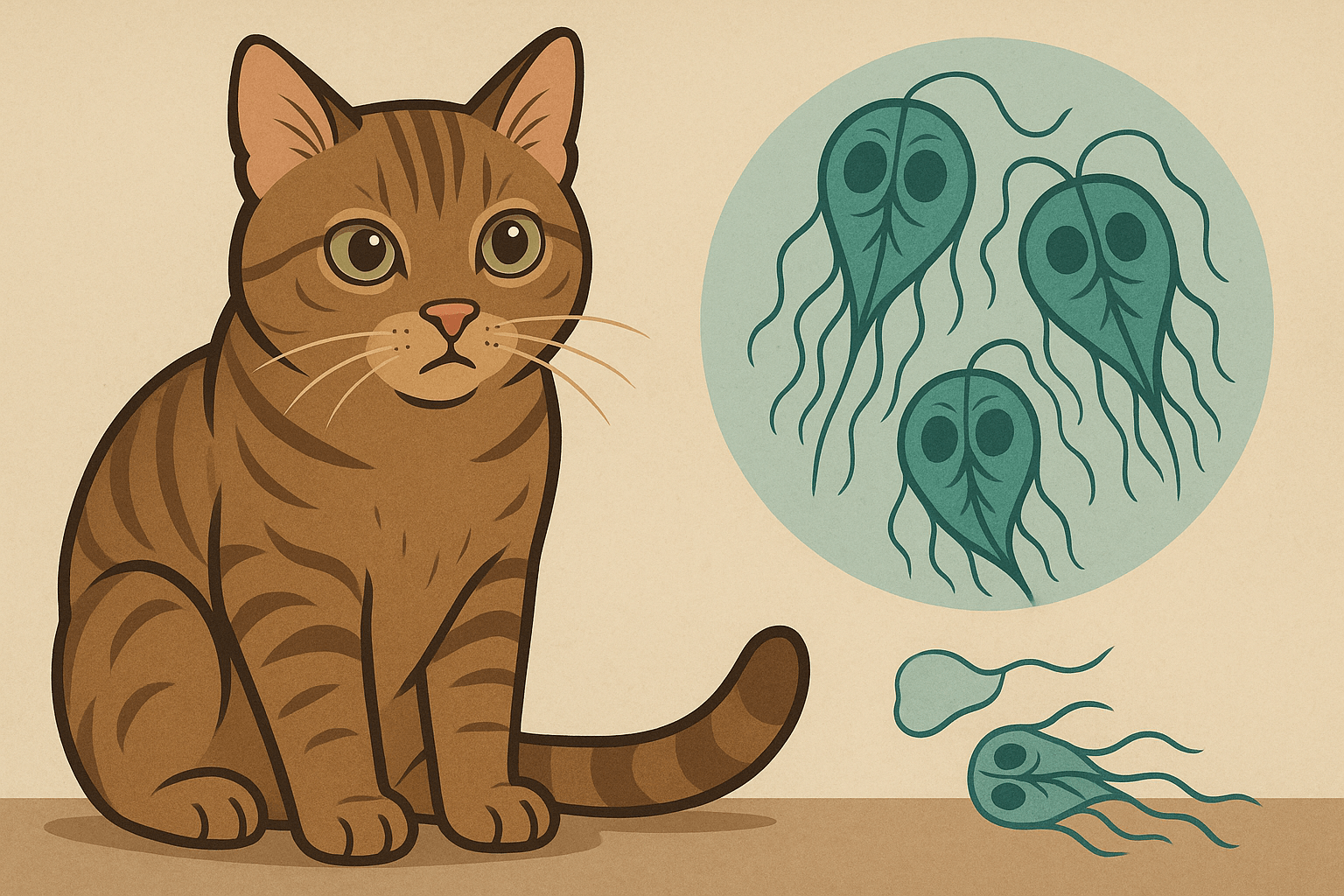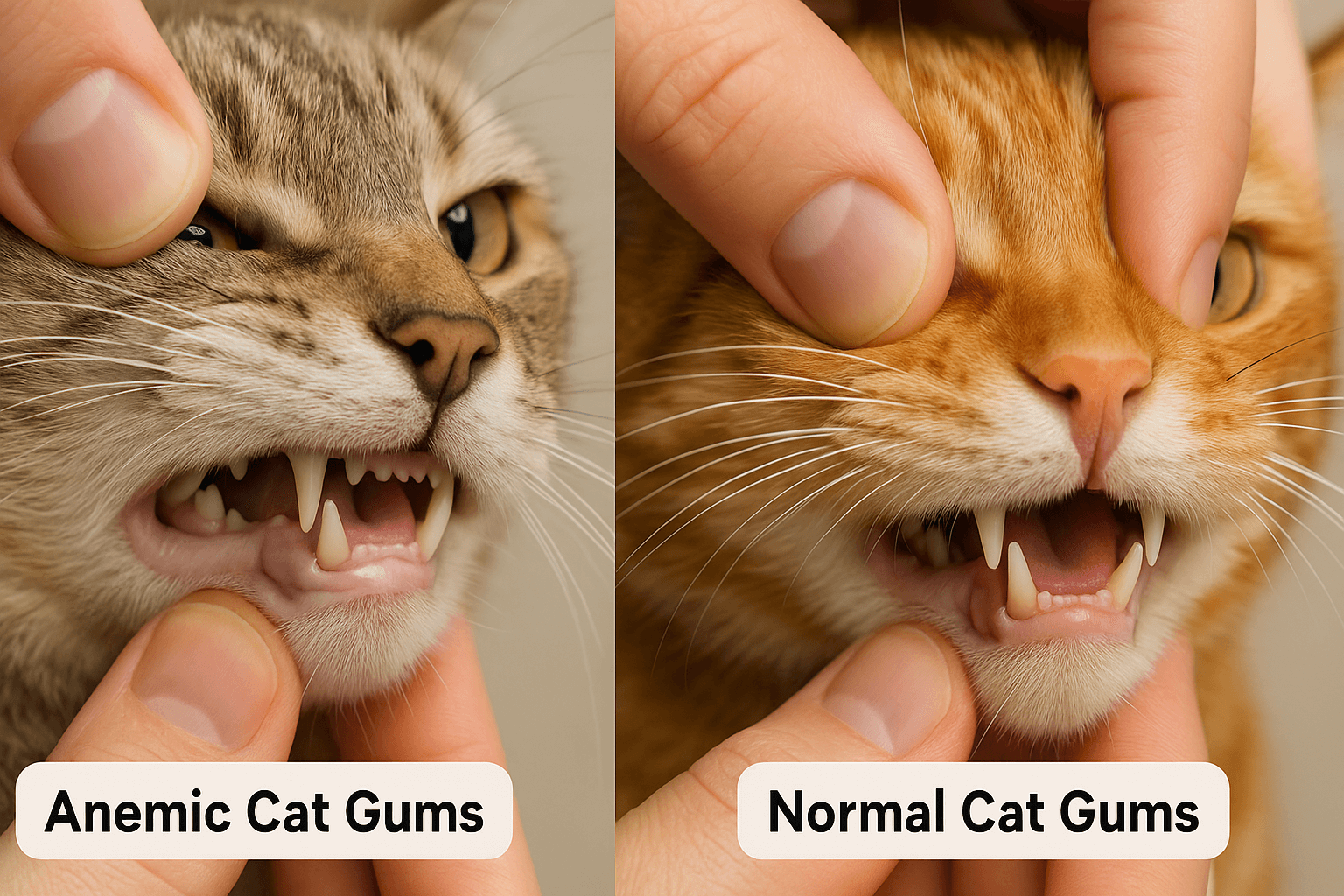Can Cats Eat Ranch?
Ranch dressing is a popular condiment loved by many for its creamy texture and tangy flavor. But what about our feline friends? Can cats eat ranch, or is it something they should avoid altogether? As obligate carnivores, cats have very specific dietary needs, and certain human foods can pose risks to their health. While ranch might seem harmless, its ingredients could be problematic for your furry companion. In this blog post, we’ll explore whether ranch is safe for cats, the potential risks involved, and how to make better food choices for your pet. Let’s dive into the details to ensure your cat stays happy and healthy.
Why Ranch May Not Be Safe for Cats
While ranch dressing might taste delicious to us, it contains several ingredients that can be harmful to cats. Understanding these risks will help you make informed decisions about what you feed your pet.
High Fat Content:
Ranch dressing is loaded with fats, which can upset a cat’s digestive system and lead to issues like vomiting or diarrhea.Onions and Garlic:
Many ranch recipes include onion or garlic powder, both of which are toxic to cats and can damage their red blood cells.Dairy Ingredients:
Ranch often contains buttermilk or other dairy products, which most adult cats cannot digest properly due to lactose intolerance.Artificial Additives:
Preservatives, artificial flavors, and colors in ranch may irritate your cat’s stomach or cause long-term health problems.Salt Levels:
High sodium content in ranch can dehydrate your cat or strain their kidneys over time.
These factors make ranch an unsuitable snack for cats, emphasizing the importance of sticking to species-appropriate foods.
Signs Your Cat May Have Eaten Ranch
If your cat accidentally ingests ranch, they may exhibit symptoms indicating discomfort or potential health issues. Keep an eye out for these warning signs.
Gastrointestinal Upset:
Vomiting or diarrhea are common reactions to consuming high-fat or dairy-based foods like ranch.Lethargy:
A sudden lack of energy or unusual tiredness could signal digestive distress or toxicity from harmful ingredients.Loss of Appetite:
Cats who feel unwell after eating ranch may refuse their regular meals or treats.Difficulty Breathing:
In severe cases, onion or garlic toxicity can cause respiratory issues or anemia, requiring immediate veterinary attention.Excessive Thirst or Urination:
Increased water intake or frequent urination may indicate kidney stress caused by excessive salt.
Recognizing these symptoms early allows you to seek prompt veterinary care and prevent further complications.
Check this guide 👉Can Cats Eat Cauliflower? Best 7 Expert Tips!
Check this guide 👉Can Cats Eat Crackers? Best 7 Expert Tips!
Check this guide 👉Can Cats Eat Parsley? Best 7 Expert Tips!

Foods Cats Can Safely Eat | Foods Cats Should Avoid |
|---|---|
Plain cooked chicken (no seasoning) | Onions, garlic, and chives |
Small amounts of plain pumpkin | Dairy products like milk and cheese |
Blueberries or watermelon (seedless) | Processed foods like ranch dressing |
Cooked eggs (without oil or butter) | Chocolate, caffeine, and alcohol |
Cat-safe herbs like catnip | Grapes, raisins, and citrus fruits |
How to Prevent Your Cat from Eating Harmful Foods
Preventing accidental ingestion of harmful foods like ranch requires vigilance and proactive measures. Follow these tips to keep your cat safe.
Store Food Out of Reach:
Keep dressings, sauces, and other human foods in secure locations where curious cats can’t access them.Supervise Snack Time:
Always monitor your cat during meals or when offering treats to ensure they don’t sneak forbidden items.Educate Family Members:
Make sure everyone in your household understands which foods are safe for cats and which aren’t.Provide Safe Alternatives:
Offer cat-friendly snacks like freeze-dried meat or small pieces of plain cooked chicken instead of sharing human food.Train Your Cat:
Use positive reinforcement to teach your cat commands like “leave it” to prevent them from eating dangerous items.
By taking these precautions, you can protect your cat from the dangers of inappropriate foods.
Healthier Alternatives to Ranch for Cats
If you’re looking to treat your cat without risking their health, there are plenty of safer alternatives to ranch that they’ll enjoy just as much.
Plain Cooked Meat:
Small portions of unseasoned chicken, turkey, or beef make excellent protein-rich treats.Cat Grass:
Cat grass provides fiber and aids digestion, making it a natural and safe option for nibbling.Freeze-Dried Liver Treats:
These treats mimic the rich flavor of ranch without any harmful additives.Homemade Cat-Friendly Snacks:
Prepare simple snacks using ingredients like pureed pumpkin or boiled fish for a healthy treat.Commercial Cat Treats:
Choose vet-approved treats specifically designed to meet your cat’s nutritional needs.
These alternatives ensure your cat enjoys tasty treats while staying healthy and safe.
Common Mistakes Owners Make When Feeding Cats Human Food
Feeding cats human food occasionally seems harmless, but certain mistakes can jeopardize their health. Here’s what to avoid when sharing snacks with your cat.
Assuming All Human Foods Are Safe:
Many human foods, like ranch, contain ingredients that are toxic or indigestible for cats.Ignoring Portion Sizes:
Even safe foods can cause problems if given in large quantities, leading to obesity or nutrient imbalances.Overlooking Hidden Ingredients:
Spices, seasonings, and additives in human food can irritate your cat’s digestive system.Rewarding Begging Behavior:
Giving in to begging reinforces bad habits and increases the chance of feeding inappropriate foods.Not Consulting a Vet First:
Always check with your veterinarian before introducing new foods to your cat’s diet.
Avoiding these mistakes ensures your cat stays healthy and avoids unnecessary risks.
Understanding Your Cat’s Nutritional Needs
Cats require a balanced diet tailored to their physiology as obligate carnivores. Understanding their nutritional requirements helps you make informed decisions about their meals.
High Protein Intake:
Cats thrive on diets rich in animal-based proteins, which support muscle development and overall vitality.Limited Carbohydrates:
Unlike humans, cats don’t need carbs; too many can lead to weight gain and diabetes.Essential Fatty Acids:
Omega-3 and omega-6 fatty acids promote skin health, shiny coats, and reduced inflammation.Hydration Through Wet Food:
Wet food provides moisture, preventing dehydration and supporting urinary tract health.Taurine-Rich Diets:
Taurine is crucial for heart, vision, and reproductive health, and must be included in their diet.
Meeting these nutritional needs ensures your cat remains active, healthy, and thriving.
Fun Ways to Treat Your Cat Without Risking Their Health
Treating your cat doesn’t have to involve risky human foods like ranch. There are plenty of creative and safe ways to spoil your furry friend.
Interactive Feeders:
Puzzle toys filled with kibble or treats engage your cat mentally while rewarding them with food.DIY Catnip Toys:
Stuff socks or fabric scraps with dried catnip for a fun, homemade toy your cat will love.Frozen Treats:
Freeze cubes of diluted chicken broth or tuna juice for a refreshing snack on hot days.Playtime Rewards:
Use extra play sessions as a reward instead of food, strengthening your bond through activity.Special Grooming Sessions:
Brushing your cat’s fur or giving them a gentle massage can feel like a luxurious treat.
These ideas allow you to pamper your cat safely while keeping their health a top priority.
Frequently Asked Questions About Cats and Ranch
What happens if my cat eats a small amount of ranch?
A tiny taste may not harm your cat, but monitor them closely for signs of upset stomach or other symptoms.
Is ranch dressing more dangerous than other human foods?
Yes, due to its combination of dairy, spices, and high fat content, ranch poses multiple risks to cats.
Can kittens eat ranch?
No, kittens are even more vulnerable to harmful ingredients and should never consume ranch or similar foods.
Are there any ranch brands safe for cats?
Even “healthier” versions of ranch contain ingredients that are unsafe for cats, so it’s best to avoid all types.
What should I do if my cat shows signs of illness after eating ranch?
Contact your veterinarian immediately to assess your cat’s condition and provide appropriate treatment.
Prioritizing Your Cat’s Health Over Temptation
While ranch dressing might seem like a fun treat to share with your cat, it’s simply not worth the risk. Between its high fat content, dairy, and potentially toxic ingredients, ranch offers no benefits for your feline friend. Instead, focus on providing safe, species-appropriate foods that cater to their unique dietary needs. By being mindful of what your cat consumes, you can ensure they live a long, happy, and healthy life. Remember, your cat relies on you to make the best choices for their well-being—so always prioritize their health above curiosity or convenience.
Giardia in Cats: Best 7 Expert Tips! Discover expert advice on identifying, treating, and preventing giardia in cats to ensure your feline stays happy and healthy.
Cat Hyperventilating: Best 7 Expert Tips! Discover signs, causes, and solutions for cat hyperventilation. Learn how to calm your cat and when to seek veterinary care for their breathing issues.
Anemic Cat Gums vs Normal: Best 7 Expert Tips! Learn to spot signs of anemia in cats, understand gum health, and ensure your feline stays happy and healthy with expert advice.
Himalayan Cat Size: Best 7 Expert Tips! Discover expert advice on Himalayan cat size, growth factors, care tips, and how to ensure your feline stays healthy and happy.




